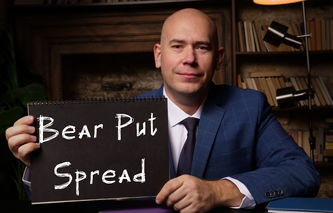Definition
The term bull put spread refers to a vertical spread consisting of two puts with the same expiration date but different strike prices. Bull put spreads produce a near term cash inflow but have the potential to produce a longer-term cash outflow.
Explanation
A bull put spread is a strategy that includes the sale of one put (short put) and the purchase of a second put with a lower strike price (long put), which is used to help offset the cost of purchasing the higher priced strike put (short put). The strategy is used when an investor would like to profit from a stock that increases in value. The investor starts this position with a premium (credit) since the sale of the short put will generate more income than the purchase of the long put.
As a reminder, a long put involves the purchase of a put option, speculating the price of the underlying security will decline. A short put involves the selling of a put option, which obligates the seller to purchase the shares of the underlying stock if the holder of the put exercises their option, or if the option expires in-the-money.
Maximum profits are limited with a bull put spread. If the value of the stock rises above the higher strike price at expiration, both put options will expire out-of-the-money. Under these conditions, the investor would get to keep the initial premium received when establishing the spread.The maximum loss occurs when the stock declines below the lower put's (long put) strike price at expiration. When this occurs, the investor would be assigned on their short put, which would be deep-in-the money and exercises their right on their in-the-money long put. The investor would buy shares at a higher price than the strike price of their long put; effectively forcing the investor to sell low while buying high. The maximum loss would be the difference between the long and short put strike prices minus the premium received when establishing the credit.
The breakeven point for a bull put spread occurs when the stock's price falls below the upper strike price (short put) by an amount equal to the premium received when establishing the spread. When this occurs, the long put expires out-of-the-money and the intrinsic value of the short put would equal the initial premium received.


.png)

